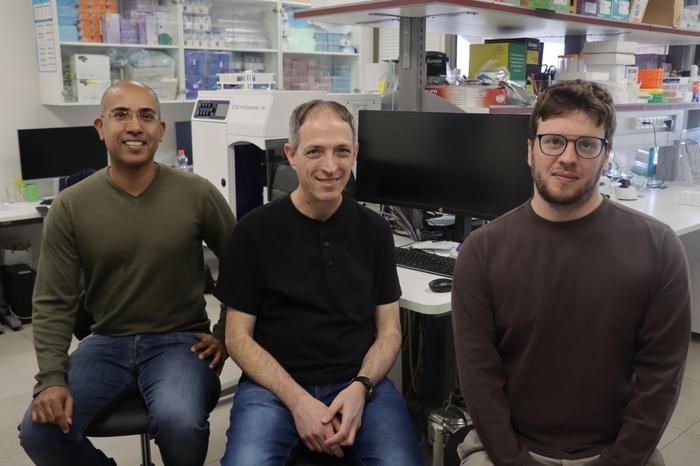Researchers at Tel Aviv University have unveiled a groundbreaking artificial intelligence-based technique that has the potential to revolutionize how scientists understand cellular responses to various treatments, particularly in the context of cancer therapies. This innovative approach, known as scNET (Single-cell Network-based Expression Technology), utilizes advanced methodologies to analyze gene expression at the single-cell level coupled with intricate networks of gene interactions. The ability to dissect cellular behavior in this manner sheds new light on the dynamic changes occurring within biological environments, especially those impacted by diseases such as cancer.
The scNET system represents a significant leap forward in the realm of biomedical research. Traditionally, the measurement of gene expression was hindered by substantial levels of noise that clouded the interpretation of data. However, scNET integrates single-cell sequencing data with comprehensive interaction networks among genes. This synergy facilitates greater clarity in identifying gene interactions, akin to a social network mapping that delineates how different genes connect and influence one another. By doing so, scNET opens up new avenues for exploring the complex behaviors of cellular populations in response to various therapeutic interventions.
Cancer is one of the most challenging diseases to treat, primarily due to its heterogeneity and ability to adapt and resist various forms of therapy. Cancer cells are often surrounded by a plethora of other cell types, including supportive cells that can either aid in tumor progression or contribute to anti-tumor responses. It is vital to understand these interactions to devise more effective treatment strategies. The advent of single-cell RNA sequencing has revolutionized this field, enabling researchers for the first time to investigate the unique gene expression profiles of distinct cell types within a tumor. scNET enhances this capability by allowing for a more accurate depiction of these populations and their functional behaviors under different conditions.
A noticeable challenge that persists, even with high-resolution data from advanced sequencing technologies, is the presence of high noise levels that obfuscate the underlying genetic programs crucial for normal cellular functions. This is where scNET demonstrates its value. By employing sophisticated algorithms, the system minimizes noise, facilitating the identification of significant genetic changes that can influence therapeutic responses. This is particularly relevant in the context of evaluating the effectiveness of cancer therapies.
PhD student Ron Sheinin, who played a pivotal role in the development of scNET, highlights its practical implications. He underscores the system’s ability to reveal how T cells, a type of immune cell known for combating cancer, change their behavior in response to treatment. Prior research efforts struggled to achieve this level of insight due to the noise associated with standard data. Through scNET, researchers can delineate how treatments impact the cytotoxic activities of T cells, thereby advancing our understanding of immune system responses to tumors.
The implications of scNET extend beyond mere data analysis. Prominent researcher Prof. Asaf Madi emphasizes that the system’s capabilities could significantly enhance therapeutic strategies. By identifying how specific treatments affect immune responses, scientists might uncover new methods to bolster these natural defenses against cancer. The research underscores how integrating AI with biomedical findings can lead to advanced strategies for tackling complex diseases.
Prof. Roded Sharan, the head of the School of Computer Science and AI at Tel Aviv University, further emphasizes the significance of this research. He points out that scNET exemplifies the promise of artificial intelligence in deciphering complex biological data. This research is not merely about understanding cellular behaviors but is also about equipping scientists with advanced computational tools that can better elucidate the intricacies of cellular functions. The ultimate goal is to propel the development of innovative treatment options that enhance health outcomes.
As scNET surfaces new biological insights regarding cellular interaction and response, it also fosters a broader dialogue on the role of AI in medical research. The potential to uncover hidden mechanisms in diseases can inspire the scientific community to explore new hypotheses and methodologies for investigating cellular behaviors. This paradigm shift in how researchers approach cancer and other diseases could pave the way for personalized medical therapies that are more effective and tailored to individual patient profiles.
In closing, the research published in Nature Methods lays a foundation for further exploration into the effects of integrating artificial intelligence with biomedicine. The scNET method not only provides a compelling case for the synergy of technology and biological inquiry but also showcases how advancements in AI can significantly impact healthcare. As scientists continue to unravel the genetic intricacies of diseases, tools like scNET will be essential for guiding the path toward novel therapeutic discoveries.
The exploration of this AI-driven methodology emphasizes the need for ongoing research and collaboration within the scientific community. It showcases how interdisciplinary approaches—combining expertise from computer science, biology, and medicine—are crucial in advancing our understanding of complex diseases like cancer and enhancing treatment outcomes through innovative means.
Subject of Research: AI-based method revealing cellular responses to drug treatments
Article Title: A Novel AI-based Method Reveals How Cells Respond to Drug Treatments
News Publication Date: October 2023
Web References: N/A
References: Nature Methods
Image Credits: Credit: Tel Aviv University
Keywords: AI, single-cell sequencing, gene interactions, drug treatments, cancer research, T cells.




